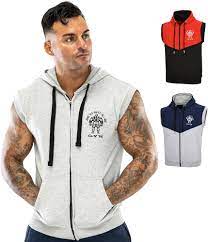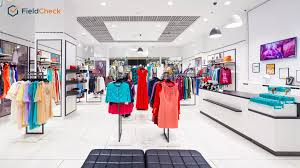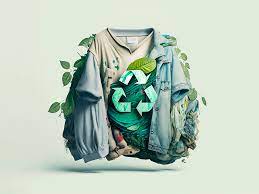Sustainable Clothing: Fashion with a Conscience
In recent years, the fashion industry has been under scrutiny for its negative impact on the environment. From excessive water consumption to harmful chemical dyes and textile waste, the way we produce and consume clothing has taken a toll on our planet. However, there is a growing movement towards sustainable clothing that aims to address these concerns and promote a more eco-friendly approach to fashion.
Sustainable clothing refers to garments that are designed, produced, and consumed in an environmentally and socially responsible manner. This means considering every step of the supply chain, from sourcing materials to manufacturing processes and even packaging. The goal is to minimize harm to the environment while also ensuring fair treatment of workers involved in the production process.
One key aspect of sustainable clothing is the use of organic or recycled materials. Traditional cotton farming, for example, requires vast amounts of water and pesticide use, which can have detrimental effects on local ecosystems. By opting for organic cotton or other sustainable fabrics like hemp or bamboo, we can reduce our ecological footprint significantly.
Another important consideration is the manufacturing process itself. Sustainable brands strive to minimize energy consumption and waste generation by implementing efficient production techniques. This may involve using renewable energy sources or implementing recycling programs within their facilities.
Furthermore, sustainable clothing promotes fair labor practices by ensuring that workers are paid fair wages and operate in safe working conditions. This helps support local communities and ensures that those involved in creating our clothes are treated ethically.
When it comes to sustainable fashion, longevity is key. Fast fashion has conditioned us to view clothing as disposable items that are quickly discarded after just a few wears. Sustainable brands encourage consumers to invest in high-quality garments that are designed to last longer both in terms of style and durability. By choosing timeless pieces over trendy fast-fashion items, we can reduce waste and contribute towards a more sustainable future.
As consumers, we play a crucial role in driving change within the fashion industry. By supporting sustainable brands and making conscious purchasing decisions, we can send a strong message that we value both style and sustainability. Additionally, we can extend the lifespan of our own clothing by repairing, swapping, or donating items we no longer need.
In conclusion, sustainable clothing represents a positive shift towards a more responsible and ethical fashion industry. By choosing eco-friendly materials, embracing efficient manufacturing processes, promoting fair labor practices, and adopting a long-term mindset when it comes to fashion consumption, we can make a significant impact on the health of our planet. Let’s embrace sustainable clothing as an opportunity to express our personal style while also making a positive difference in the world.
Frequently Asked Questions: Sustainable Clothing in the UK
- What is sustainable clothing?
- How can I tell if a piece of clothing is sustainable?
- Where can I buy sustainable clothing?
- What materials are used in sustainable fashion?
- How do I care for my sustainable clothes?
- What brands make ethical and sustainable clothing?
What is sustainable clothing?
Sustainable clothing refers to garments that are designed, produced, and consumed in a manner that minimizes their negative impact on the environment and promotes social responsibility. It encompasses various aspects of the fashion industry, including material sourcing, manufacturing processes, and consumer behavior.
One key aspect of sustainable clothing is the use of eco-friendly materials. This involves opting for organic fibers such as organic cotton, hemp, or bamboo, which are grown without harmful pesticides or synthetic fertilizers. Recycled materials like recycled polyester or upcycled fabrics are also commonly used to reduce waste and minimize the need for new resource extraction.
In addition to material choices, sustainable clothing focuses on responsible manufacturing practices. This includes reducing energy consumption and water usage during production, implementing efficient waste management systems, and ensuring safe working conditions for employees. Sustainable brands often prioritize transparency in their supply chains to ensure that workers are treated fairly and paid living wages.
Another important element of sustainable clothing is longevity. Fast fashion has popularized a culture of disposable fashion where clothes are quickly discarded after just a few wears. Sustainable brands encourage consumers to invest in high-quality garments that are designed to last longer both in terms of style and durability. By promoting timeless designs and encouraging proper care and maintenance of clothing items, sustainable fashion aims to reduce waste and promote a more conscious approach to consumption.
Sustainable clothing also emphasizes ethical consumer behavior. This includes making informed purchasing decisions by supporting brands with transparent sustainability practices and avoiding those associated with unethical labor practices or environmental harm. Consumers can also contribute by extending the lifespan of their own clothing through repair, swapping with others, or donating items they no longer need.
Overall, sustainable clothing strives to create a more responsible fashion industry that considers the environmental impact throughout the entire lifecycle of a garment while promoting fair treatment of workers involved in its production. It offers an alternative approach to traditional fashion consumption by prioritizing sustainability without compromising on style or quality.
How can I tell if a piece of clothing is sustainable?
Determining whether a piece of clothing is sustainable requires some investigation and consideration. Here are a few key factors to look for when assessing the sustainability of a garment:
- Materials: Check what materials the clothing is made from. Look for organic or recycled fabrics like organic cotton, hemp, linen, Tencel, or recycled polyester. These materials have a lower environmental impact compared to conventional materials.
- Certifications: Look for certifications such as GOTS (Global Organic Textile Standard), Oeko-Tex Standard 100, Fair Trade Certified, or Bluesign that indicate the clothing meets specific sustainability criteria. These certifications ensure that the garment has been produced using environmentally friendly practices and fair labor standards.
- Transparency: Research the brand’s transparency regarding their supply chain and production processes. Sustainable brands often provide information about where their materials are sourced, how their products are made, and their commitment to ethical practices.
- Manufacturing Practices: Consider how the clothing is manufactured. Sustainable brands typically prioritize energy-efficient production methods, use renewable energy sources when possible, and minimize waste generation.
- Durability: Assess the quality of the garment. Sustainable clothing is designed to be durable and long-lasting, reducing the need for frequent replacements. Look for well-made stitching, sturdy fabric, and attention to detail in design.
- Ethical Labor Practices: Investigate whether the brand ensures fair wages and safe working conditions for its workers throughout its supply chain. Look for certifications like Fair Trade Certified or information on social responsibility initiatives.
- Packaging: Consider how the clothing is packaged. Sustainable brands often use minimal packaging made from recycled or biodegradable materials to reduce waste.
- Brand Philosophy: Explore the brand’s mission statement and values regarding sustainability and ethical practices. Brands with a genuine commitment to sustainability will typically have clear messaging about their environmental efforts.
Remember that no single garment may tick all these boxes perfectly; however, assessing these factors can help you make a more informed decision about the sustainability of a piece of clothing. Supporting brands that prioritize sustainability encourages the fashion industry to adopt more environmentally friendly practices and contributes to a more sustainable future.
Where can I buy sustainable clothing?
There are several options available for purchasing sustainable clothing. Here are a few suggestions:
Online Sustainable Retailers: Many online retailers specialize in sustainable and ethical fashion. Some popular options include:
– Patagonia: Known for its commitment to environmental and social responsibility.
– Everlane: Offers high-quality basics and transparent pricing.
– Reformation: Focuses on sustainable fabrics and responsible manufacturing practices.
– Thought Clothing: Offers a range of eco-friendly clothing made from natural materials.
Thrift and Vintage Stores: Shopping at thrift stores or vintage shops is an excellent way to reduce waste by giving pre-loved items a new life. You can often find unique, one-of-a-kind pieces with a sustainable twist.
Local Sustainable Brands: Research local brands in your area that prioritize sustainability in their production processes. These brands often have physical stores or participate in local markets, allowing you to support local businesses while making eco-conscious choices.
Clothing Rental Services: Consider renting clothing for special occasions or even everyday wear from rental platforms such as Rent the Runway or HURR Collective. This way, you can enjoy wearing different styles without contributing to excessive consumption.
Secondhand Online Marketplaces: Platforms like Depop, Poshmark, or eBay provide opportunities to buy secondhand clothing directly from individuals, offering a wide range of styles at affordable prices.
Remember, when shopping for sustainable clothing, look for certifications such as Fair Trade, GOTS (Global Organic Textile Standard), or B Corp that indicate the brand’s commitment to sustainability and ethical practices. By supporting these brands and adopting a more thoughtful approach to fashion consumption, we can contribute towards a more sustainable future.
What materials are used in sustainable fashion?
Sustainable fashion embraces a range of materials that are carefully chosen to minimize environmental impact. Here are some commonly used materials in sustainable fashion:
- Organic Cotton: Unlike conventional cotton, organic cotton is grown without the use of synthetic pesticides or genetically modified seeds. It requires less water and promotes healthier soil.
- Hemp: Hemp is a versatile and sustainable material that requires minimal water and no pesticides to grow. It is known for its durability and breathability.
- Bamboo: Bamboo is a fast-growing plant that can be sustainably harvested without the need for chemical fertilizers or pesticides. It is naturally antibacterial, moisture-wicking, and biodegradable.
- Recycled Polyester: Polyester made from recycled plastic bottles or other post-consumer waste helps reduce the demand for virgin polyester production, which has a high carbon footprint.
- Tencel (Lyocell): Tencel is a type of rayon made from sustainably sourced wood pulp, often derived from eucalyptus trees. The production process uses less water and energy compared to traditional rayon production.
- Linen: Linen is made from flax plant fibers, which require fewer pesticides and less water compared to conventional cotton. It is known for its breathability and strength.
- Wool: Sustainable wool comes from ethically raised sheep, ensuring their welfare and responsible land management practices.
- Cork: Cork fabric is obtained from the bark of cork oak trees without harming the tree itself. It is lightweight, durable, and renewable.
- Piñatex: Piñatex is a leather alternative made from pineapple leaf fibers that are a byproduct of the pineapple industry, reducing waste while offering a cruelty-free option.
- Organic Silk: Organic silk is produced using environmentally friendly methods that avoid harmful chemicals typically used in conventional silk production.
These materials represent just a few examples of sustainable options available in the fashion industry. Each material has unique properties and benefits, but they all share a common goal of reducing environmental impact and promoting responsible production practices.
How do I care for my sustainable clothes?
Caring for your sustainable clothes is essential to ensure their longevity and minimize your environmental impact. Here are some tips on how to care for your sustainable garments:
- Follow the Care Instructions: Always read and follow the care instructions provided by the manufacturer. Sustainable clothing may have specific care requirements due to the use of natural or eco-friendly materials.
- Wash with Cold Water: Washing your clothes in cold water instead of hot or warm water helps save energy and prevents color fading or shrinkage. It also reduces the risk of releasing microplastics into the water system.
- Use Environmentally Friendly Detergents: Opt for eco-friendly, biodegradable detergents that are free from harsh chemicals and toxins. These detergents are gentler on both your clothes and the environment.
- Avoid Overwashing: Only wash your clothes when necessary to conserve water and energy. Many garments can be freshened up by spot cleaning or airing them out instead of a full wash.
- Air Dry Whenever Possible: Instead of using a dryer, air dry your clothes whenever possible. This not only saves energy but also helps extend the lifespan of your garments by reducing wear and tear caused by heat.
- Mend and Repair: If you notice a small tear or loose button, take the time to mend it rather than discarding the item. Learning basic sewing skills can help you extend the life of your sustainable clothing significantly.
- Store Properly: Store your clothes in a cool, dry place away from direct sunlight to prevent fading or damage. Folding items neatly or hanging them properly can help maintain their shape and prevent wrinkles.
- Avoid Dry Cleaning When Possible: Traditional dry cleaning methods often use harmful chemicals that can be damaging to both your health and the environment. Look for eco-friendly dry cleaning alternatives or consider spot cleaning at home instead.
- Donate or Swap Unwanted Clothing: If you no longer want a sustainable garment, consider donating it to a local charity or participating in clothing swaps. This allows your clothes to find new homes and extends their lifespan.
- Educate Yourself: Stay informed about sustainable fashion practices and the latest care techniques. By continually learning and adapting your habits, you can become an even more responsible consumer.
By adopting these practices, you can ensure that your sustainable clothes last longer, reducing the need for frequent replacements and minimizing your impact on the environment. Remember, caring for your garments is an important part of embracing a sustainable lifestyle.
What brands make ethical and sustainable clothing?
There are several brands that have made significant efforts to produce ethical and sustainable clothing. Here are a few examples:
- Patagonia: Patagonia is a well-known outdoor clothing brand that is committed to sustainability. They use recycled materials, promote fair labor practices, and prioritize durability to reduce waste.
- Everlane: Everlane focuses on transparency and ethical manufacturing. They provide detailed information about their factories, including wages and working conditions, and use environmentally friendly materials.
- Eileen Fisher: Eileen Fisher is dedicated to sustainable fashion through their use of organic fibers, responsible dyeing processes, and recycling initiatives. They also have a take-back program for old garments.
- People Tree: People Tree is a pioneer in fair trade fashion, working directly with artisans in developing countries to create sustainable clothing using organic cotton and other eco-friendly materials.
- Reformation: Reformation combines style with sustainability by using eco-friendly fabrics, repurposing vintage clothing, and implementing energy-efficient practices in their manufacturing process.
- Stella McCartney: Stella McCartney is known for her commitment to cruelty-free fashion, using vegan materials instead of animal products. The brand also emphasizes sustainable sourcing and manufacturing methods.
- Thought Clothing: Thought Clothing offers a range of ethically made garments using natural fibers like organic cotton, hemp, and bamboo. They prioritize fair trade practices and support small-scale producers.
- Outerknown: Outerknown focuses on creating sustainable clothing for both men and women using recycled materials like Econyl (made from regenerated fishing nets) and organic cotton.
These are just a few examples of brands that prioritize ethical and sustainable practices in their production processes. It’s important to note that the fashion industry is constantly evolving, so it’s worth researching brands’ current practices before making purchasing decisions.


